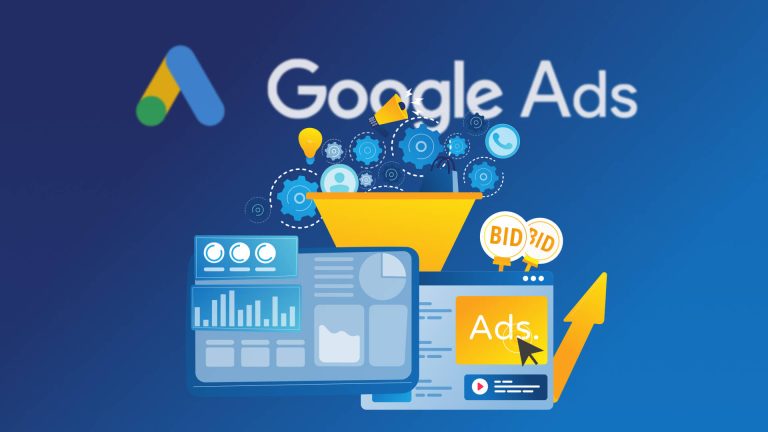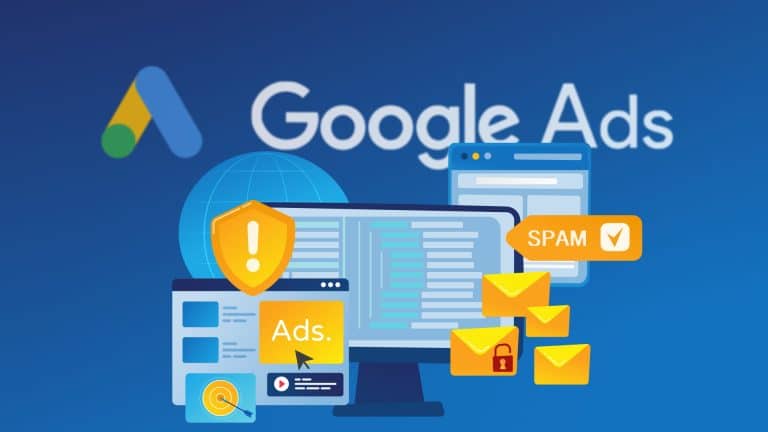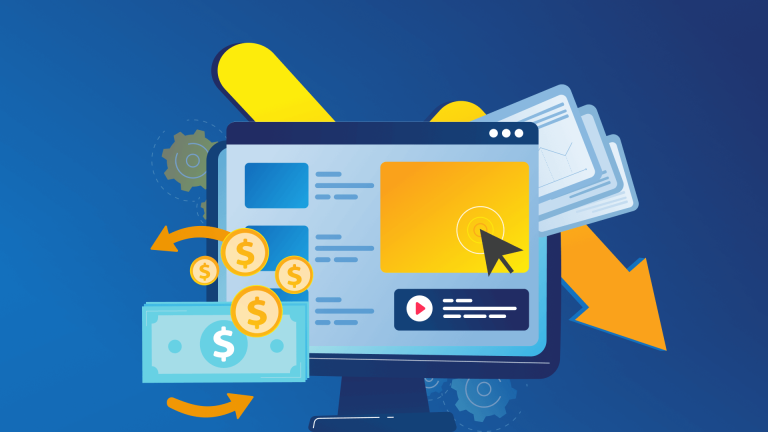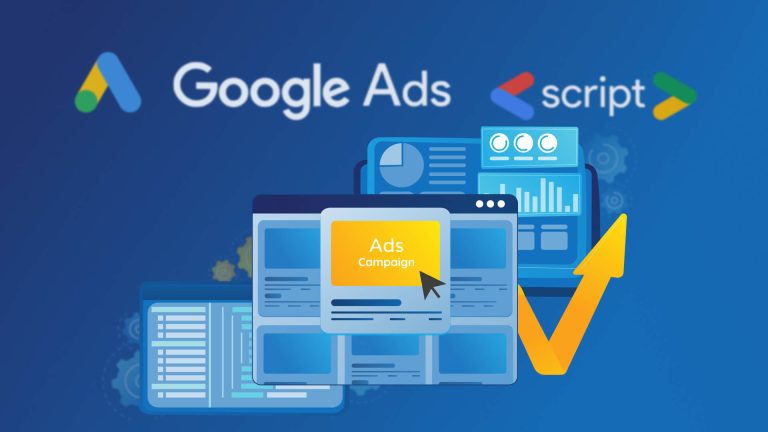On February 5, 2025, Google announced a significant update to how it judges the quality of ads. This change directly impacts Landing Page Quality Score (LPQS), which is Google’s way of rating your landing page’s effectiveness for ad clicks.
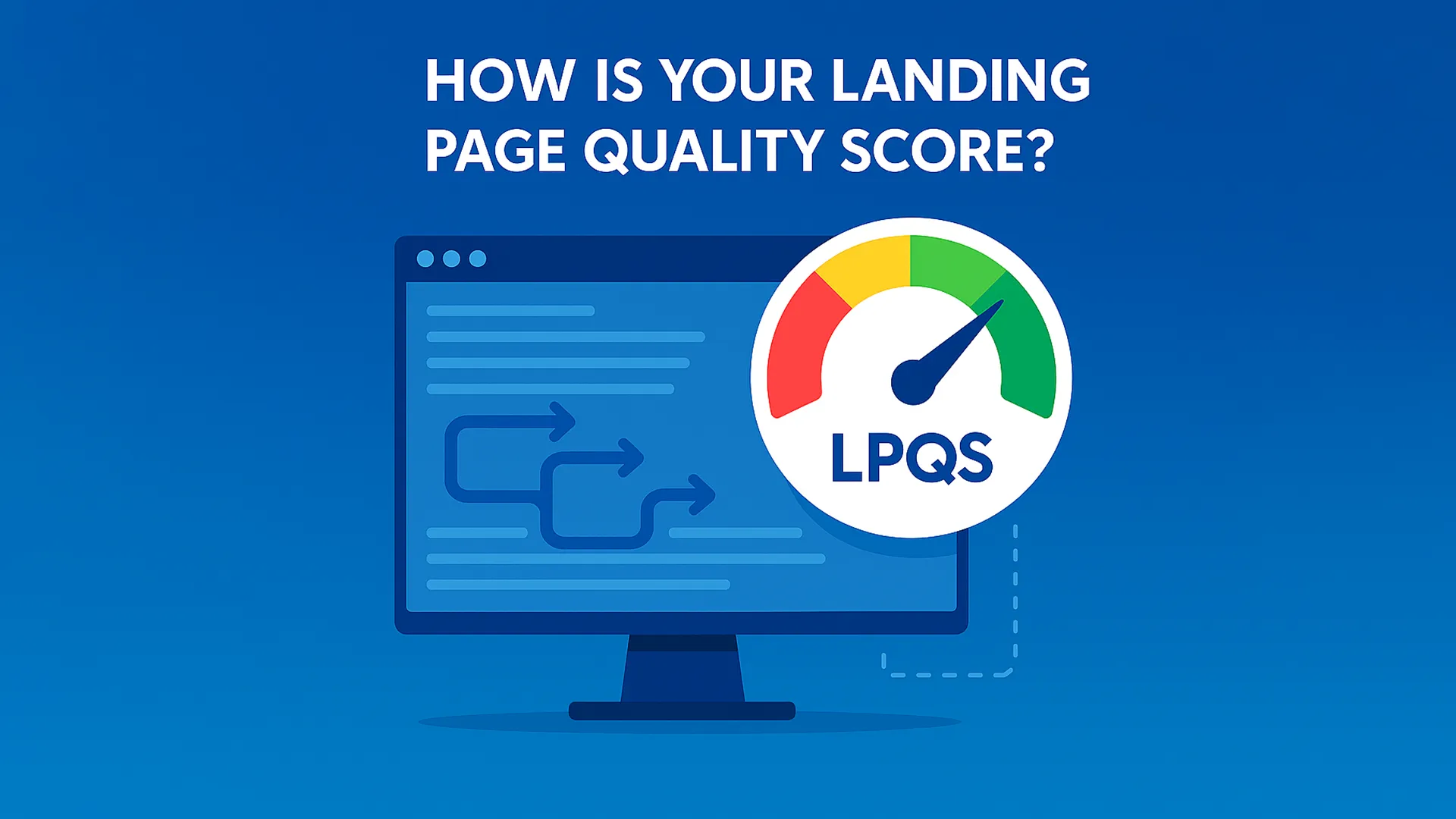
Shashi Thakur, in Google’s blog post, highlighted the importance of landing pages being both relevant and easy to navigate. Otherwise, users may bounce back to search results instead of finding what they need. Since this change went live, many PPC practitioners have seen measurable shifts in their LPQS, particularly on stripped-down B2B or lead-gen funnels with no visible navigation.
In this post, we’ll explore:
- What changed in Google’s ad quality system.
- Real-world LPQS trends observed on no-nav lead-gen pages.
- Practical navigation optimizations to recover LPQS.
- Tips for ongoing monitoring and next steps.
What Changed in February 2025
Google’s post “Search ads and the importance of landing page navigation” outlined several key points regarding the update:
- Navigation as a signal: Google’s new prediction model now assesses how easily users can navigate a landing page after clicking a Search ad. This is a big shift; it’s not just about content, but the entire user journey.
- User experience focus: If a landing page hides critical links (for example, forcing users down a single funnel without any way to find a login or related content), Google may classify that as a poor navigation experience. The goal is to prevent frustration and “pogo-sticking” – where users click, immediately bounce back to search, and click another result.
- Impact on LPQS and Ad performance: Pages with limited or no clear navigation are now more likely to be rated “Below Average” for LPQS. A lower LPQS can hurt your overall Quality Score, increase your Cost Per Click (CPC), and lower your ad’s position.
As Shashi Thakur put it:
“We’ve improved our ability to understand and predict if a Search ad leads to an unexpected destination and doesn’t offer other helpful navigation options. As a result, we’re now able to show you fewer ads like this, reducing these types of negative experiences for people searching on Google.”
This also aligns with Google’s broader efforts to prioritize user experience and helpful content, as seen in Search Quality Rater Guidelines updates. The message is clear: Google wants to serve ads that truly help users, not just drive clicks. This also means simply spending more on ads won’t guarantee good placement if your landing page offers a poor experience.
LPQS Trends on Stripped-Down Lead-Gen Funnels
To understand the real-world impact of this update, advertisers began pulling daily LPQS data at the keyword level from January 1 through March 31, 2025. By grouping each keyword’s landing page experience score into Below Average, Average, or Above Average, they visualized how stripped-down pages fared before and after Google’s announcement.
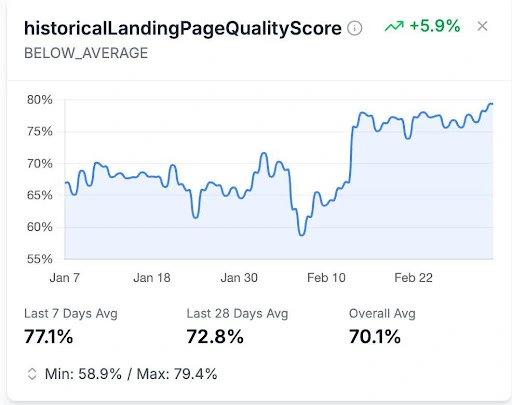
January Baseline
LPQS Distribution (Jan 1–31)
- Below Average: ~18 % of keywords
- Average: ~55 % of keywords
- Above Average: ~27 % of keywords
CPC Impact: Stable average CPC around $1.10 for high-intent, brand-plus-demo terms.
Volatility in Early February
Feb 5–10
- Daily LPQS scores on no-nav pages swung between ~62 % and ~70 % (“Average + Above”).
- This “bounce” reflects Google’s model adjusting to new navigation signals.
Mid-February “Below Average” Spike
Feb 11–20
- Share of keywords flagged Below Average jumped by +12 percentage points (from ~18 % to ~30 %).
- Average LPQS dipped 2–3 points compared to late January.
Resulting CPC Changes:
- Mid-funnel CPCs rose by 5 %–7 % on brand + “download” or “demo” keywords.
- Ad positions slipped by ~0.3 positions in some mobile campaigns.
Late-February Stabilization
After Feb 20
- Average LPQS for stripped-down pages settled near 75 %–78 % (down from ~80 % pre-announcement).
- Conversion rates remained in the 7 %–8 % range—indicating that the user experience still converted, albeit at a slightly higher cost.
Practical Navigation Optimizations to Recover LPQS
If your B2B or lead-gen page intentionally removes navigation to maximize conversions, you can introduce minimal, non-disruptive elements that signal to Google’s model “this page is still navigable”. Below are several lightweight strategies, including optional in-page navigation to help signal structure without compromising your conversion flow:
Consider a Lightweight Section Menu (Anchor-Based)
- How to do it: Use a sticky or fixed-position navigation bar that links to different sections of the page (e.g., Features, Pricing, Reviews) using anchor links.
- Why It Helps: Enables users to jump directly to key content without scrolling, improving usability and satisfying Google’s expectation of navigability even on single-page funnels.
- Pro Tip: Whether you use a hamburger menu, a horizontal scrollable bar, or a minimal text link row, ensure it’s accessible and functional across devices.
Add a Simple Breadcrumb
- How to do it: Insert a lightweight breadcrumb trail above the fold (e.g.,
Home > Services > White Paper Download). - Why It Helps: Signals structure and gives users a way to backtrack if they mis-clicked.
- Pro Tip: Use a smaller font size or lighter color so breadcrumbs don’t distract from the primary call-to-action (CTA).
Include a Minimal Footer with Key Links
- How to do it: At the bottom of your funnel page, place two or three unobtrusive links such as “Contact Us” and “Privacy Policy.”
- Why It Helps: Even a minimal footer shows Google there is deeper site navigation.
- Pro Tip: Avoid heavy scripts in the footer—keep it as lightweight as possible to prevent load-time penalties.
Use an expandable “learn more” toggle
- How to do it: Add a “Learn More About [Product]” link that expands inline to reveal two to three additional links (e.g., features, case studies).
- Why It Helps: Provides optional context and navigation without permanently displaying a full menu.
- Pro Tip: Use a simple CSS transition or inline JavaScript to reveal content; avoid large external dependencies.
Embed trust badges with relevant outbound links
- Implementation: Place 2–3 trust badges near the CTA, each linking to a lightweight “About” or “Success Stories” snippet.
- Why It Helps: Shows Google that users can verify credibility or read more, thus improving navigation signals.
- Pro Tip: Host trust pages on the same domain or via a fast CDN to prevent redirect chains.
Maintain fast load and mobile responsiveness
Even though landing pages used for ads aren’t subject to Google’s Core Web Vitals signals, page speed still influences ad performance. Google considers how quickly users can interact with your page after clicking, especially on mobile, as part of Landing Page Quality Score.
- Implementation: After adding any navigation element, run a PageSpeed Insights audit. Aim for:
- First Contentful Paint: < 2 seconds
- Time to Interactive: < 3 seconds
- Why It Helps: Google’s LPQS model still heavily weighs page speed.
- Pro Tip: Defer non-critical scripts (chatbots, tracking pixels) so that core content loads first.
Tips for ongoing monitoring and next steps
Google’s update highlights a continuous shift toward user-centric ad experiences. To stay ahead:
- Regular LPQS audits: Check your keyword-level LPQS regularly (daily or weekly). Look for significant drops or “Below Average” flags.
- A/B test navigation elements: Continuously A/B test different navigation approaches. Small tweaks can yield big improvements.
- Align ad copy with landing page content: Ensure a strong, clear connection between your ad’s promise and the landing page’s content. Mismatched expectations significantly contribute to poor user experience and lower LPQS.
- Monitor user behavior: Use tools like Google Analytics to understand user interaction on your landing pages. High bounce rates can signal navigation issues.
- Stay informed: Google frequently updates its ad quality systems. Keep an eye on official Google Ads blogs and reputable PPC news sources.
- Prioritize mobile experience: A seamless, fast mobile experience is crucial. Ensure all navigation elements are easily tappable and readable on smaller screens.
By focusing on providing a truly helpful and easy-to-use landing page, you’ll not only satisfy Google’s updated quality systems but also create a better journey for potential customers, leading to improved ad performance and more conversions.
Never miss an update
Google’s ad ecosystem is always changing. Don’t miss out on the next big update or the strategies you’ll need to succeed.
Subscribe to our insights today and get the latest digital marketing trends and Google updates delivered straight to your inbox.


